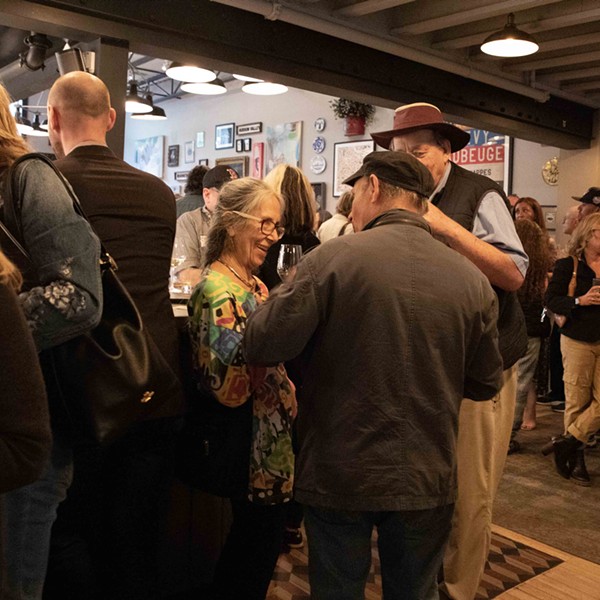Book Review: Where the Heart Beats
A Work by Kay Larson
[]
One of Western culture’s supreme subversives, the composer John Cage was a theorist and guru whose influence on the avant-garde began in the 1940s and continues to this day. Conceptual art, Minimalism, Fluxus, and punk claim him as godfather. With his partner, the dancer Merce Cunningham, he helped advance the medium we now know as performance art. Cage’s “experimental music” made use of chance operations and ambient sound. His iconic 4’33”, where a pianist sits without playing for four minutes and 33 seconds, premiered at Woodstock’s Maverick Concert Hall in 1952. The restless audience, perhaps taking it as a hoax, was not appreciative.
A new book by art critic and Accord resident Kay Larson, Where the Heart Beats, endeavors to map the path that led the composer to his silent masterpiece. We learn that Cage, after having already developed a serious interest in Asian spiritual texts (his circle included Joseph Campbell and Alan Watts), attended D. T. Suzuki’s legendary classes on Zen Buddhism at Columbia in the early ‘50s. Larson demonstrates that this experience was transformational, that the master’s teachings “cracked open” the composer’s mind. A Zen practitioner herself, the author explores Cage’s conversion and the culminating leap marked by 4’33” in a novel way. Excerpting from his writings, interviews, and recorded talks, wherein he often revealed his chops at dharma instruction and seemed to relish retelling Suzuki’s koans, Larson has Cage collaborate in his own Buddhist hagiography. “He speaks in his own voice, as I think he would want to do,” she explains.
With rich source material and inspired hunches, she brings his interior process and karmic progress to the fore. Cage confesses he “poured a lot of emotion” into The Perilous Night, a 1944 composition for prepared piano (an instrument that’s been tonally altered by objects placed on its strings—a specialty of Cage’s). When it tanked with critics: “I determined to stop writing music until I found a better reason than ‘self-expression’ for doing it.” Larson augments this assertion: “Caught in the roar of his emotions, Cage was forced to confront a question totally new to him: What is the ‘self’ that is being expressed?” Next he tells us, “I got involved in Oriental thought out of necessity.”
His quest for wisdom situated him at a nimble distance from the dire intellectual currents of the day. Sartre’s Being and Nothingness may not have mattered to him, but the Tang Dynasty Zen teachings of Huang Po did. In his “Lecture on Nothing,” given at The Club—a downtown forum whose dues-payers included the emerging A-list of 20th-century art—Cage took a swipe at 12-tone row composition, the method devised by his mentor Arnold Schoenberg: “There is not enough nothing in it.” Beyond his predecessor’s freedom from tonality, Cage sought freedom from ego, intentionality, and value judgments. The I Ching became a compositional tool. Works were based on his Gita-thumping heroes, Ramakrishna and Thoreau (woodsy Cage was also one of the world’s foremost mushroom experts, and spent considerable time foraging in our Upstate region).
Larson’s Cage consistently comes across as a regal bodhisattva, “the man of the great smile, the outgoing laugh,” as music writer Peter Yates described him. We merely glimpse the anarchist wit who in an interview with poet Ted Berrigan said, “One must not be serious…a serious person cannot have sex.” Larson succeeds in her mission, convincing us that Cage—who, incidentally, never meditated—was not just a Buddhist, but a profound and playful light.
Kay Larson will read on 7/14 at 7:30pm at Oblong Books & Music, Rhinebeck

















